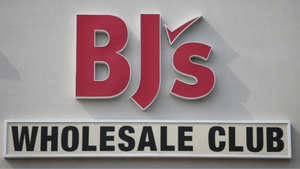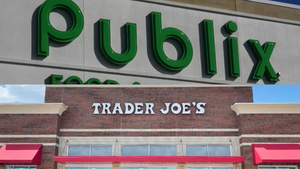Antitrust remedies juxtaposed: Haggen and C&SAntitrust remedies juxtaposed: Haggen and C&S
Fresh Perspectives: Divestiture deals for the 2015 Albertsons-Safeway merger and the pending Kroger-Albertsons merger are compared and contrasted by Solomon Partners’ Scott Moses.


“Fresh Perspectives” is a Winsight Grocery Business column from Executive Editor Russell Redman, who shares insights on news, trends, people, issues and events in and around the grocery industry.
Back in January 2015, editors at the publication I worked for (including myself) were perplexed by the news: The Federal Trade Commission had cleared the way for Albertsons and Safeway to complete their merger by divesting 168 stores—with 146 of those locations going to Pacific Northwest grocer Haggen Inc.
Unsurprisingly, we wondered why the FTC would allow an 18-store chain to acquire multiple times more locations than it already had. “How could that work?” we asked.
The answer was, it didn’t work. Haggen wasn’t able to digest the acquisition—which included stores in California, Nevada and Arizona, well beyond its Washington and Oregon market area—and ended up going bankrupt, with Albertsons later repurchasing 33 stores it had divested.
That debacle now stands as one of the chief arguments against the FTC giving the green light to the more than one-year-old, $24.6 billion Kroger-Albertsons merger.
More specifically, the Haggen fiasco is now cited by critics of the supermarket mega-merger as the reason for regulators to reject Kroger-Albertsons’ $1.9 billion divestiture deal with C&S Wholesale Grocers—a company with $30 billion in annual revenue—that was announced in early September. Under the proposed divestiture, Kroger-Albertsons would sell 413 stores, eight distribution centers and two regional offices in 17 states and the District of Columbia plus five Albertsons private brands to Keene, New Hampshire-based C&S. The pact also might require C&S to buy another 237 stores, based on Kroger and Albertsons securing FTC and other regulatory clearance for their merger.
On the face of it, in terms of scale alone, it seems strange to compare C&S’ standing as a potential acquirer versus that of Haggen.
But don’t ask me—let’s hear from someone who was actually involved in the Haggen transaction: Scott Moses, managing director and head of grocery, pharmacy and restaurant investment banking at New York-based Solomon Partners.
“Some people have said that C&S is similar to Haggen, which failed abysmally when it acquired stores divested from the Albertsons-Safeway merger in 2015. The two are entirely different companies in every important way,” Moses wrote in analysis released Thursday. “I advised Haggen on its sale to the private equity firm that used it to make this acquisition and then again on the sales conducted after it failed. I therefore know these facts intimately.”

From Scott Moses/Solomon Partners
According to Moses, Haggen was “nearly bankrupt” when it was acquired by a private equity firm “not long before” it agreed in December 2014 to acquire 146 Albertsons and Safeway stores, a quantity of locations over eight times its size.
“The vast majority of these stores were in Southern California, Arizona and Nevada, over 1,000 miles away from where most anyone had ever heard of Haggen. This compounded Haggen’s challenges because they immediately converted each of the Albertsons- and Safeway-bannered stores to the unknown Haggen banner,” he explained. “Haggen’s very small size and limited capital capacity made it very difficult for it to invest in better prices, sufficient marketing or the team required to successfully compete. Customers were confused, and sales declined precipitously.”
Moses described C&S as a “radically stronger buyer” than Haggen, calling the wholesaler one of the nation’s largest grocery businesses and private, family-owned companies. He noted that C&S has “over 100 years of grocery experience,” an estimated $30 billion in annual revenue, retail stores in multiple U.S. regions plus a “robust wholesale operation” serving more than 7,500 stores nationwide.
“To maintain customer loyalty and continuity—a key area where Haggen clearly failed—C&S will be acquiring or licensing the banners of the divested stores, along with other key teammates and infrastructure,” Moses wrote. “Unlike Haggen, C&S is very well-capitalized to be able to invest in better prices, better wages and store improvements. They have a deep management team and extensive experience successfully acquiring and integrating acquisitions.”
The largest privately held U.S. grocery distributor, C&S currently supplies independent supermarkets, chain stores, military bases and institutions, offering more than 100,000 products via 33 distribution centers/warehouses in 15 states across the country. On the retail side, C&S operates 160 stores, mostly under the Piggly Wiggly banner in the Midwest and Carolinas but also including 11 Grand Union stores in upstate New York and Vermont. Overall, C&S licenses the Piggly Wiggly banner to roughly 500 independent supermarkets in 17 states via its Piggly Wiggly LLC subsidiary.
“C&S was actually validated by the FTC just two years ago as a divestiture buyer for stores that were sold out of the merger of Price Chopper and Tops in New York,” Moses stated in his analysis, referring to acquired stores that C&S opened under the Grand Union and Piggly Wiggly banners.
“In short, the C&S transaction clearly avoids Haggen’s mistakes and ensures that the divested stores will continue to serve customers, employ teammates and offer communities another strong grocery competitor, amid the rising tide of national/discount grocers (Walmart, Target/Shipt, Costco, Amazon/Whole Foods, Aldi and Dollar General), which now control well over 60% of the American grocery market,” Moses said.
Moses disclosed in his analysis that he’s part of the team advising Albertsons on its planned acquisition by Kroger. “I readily concede that I am working with Albertsons on the merger (mainly to educate folks on the changes in our industry that I have been writing and speaking publicly about for many years),” he said, “but that fact does not make any of these other facts any less true.”
Besides the question of divestitures as an antitrust remedy, other issues faced by the Kroger-Albertsons deal—the biggest-ever U.S. supermarket merger—include its competitive impact on the grocery marketplace (and if that market is defined to include all grocery retailers, not just conventional supermarkets) as well as the agreement’s effect on labor, consumers (notably in the area of pricing) and the grocery supply chain.
We’ll just have to wait and see what federal and state regulators decide. And with Kroger recently saying it’s still on track to close the merger in early 2024, that decision could be soon.
******
Editor’s Note: This marks my last Fresh Perspectives column for Winsight Grocery Business. WGB is being folded into Supermarket News as of 2024, following Winsight LLC’s acquisition by SN parent Informa Inc. in May. I hope I’ve been able to stir some thought and spark some debate. I’ve certainly learned a lot about this industry and received some great insights from all of you. Thank you.
About the Author
You May Also Like






